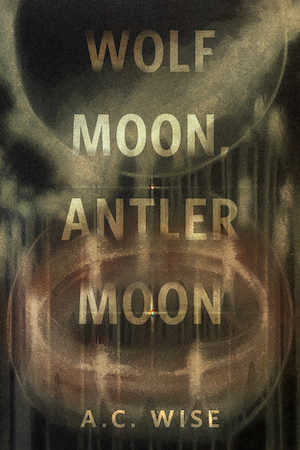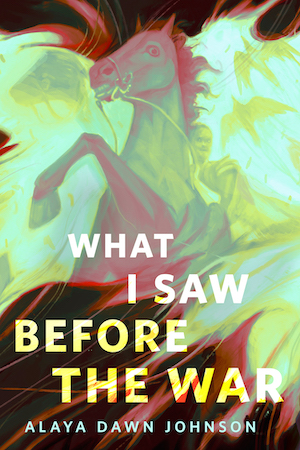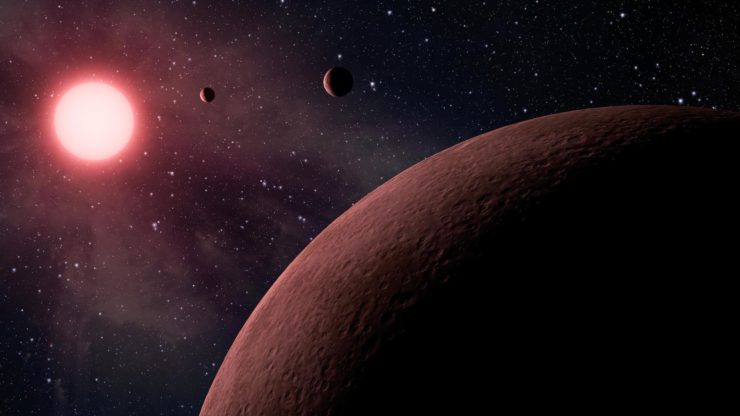Suppose for the sake of argument the Kepler data is correct when it suggests there are as many as three hundred million (300,000,000!) potentially life-bearing worlds orbiting sunlike stars in our Milky Way. Suppose we win the jackpot and they are all Earthlike enough for us to occupy. Suppose further some grand unified polity spans the whole of the Milky Way, in the manner of Asimov’s Galactic Empire. Among the many implications is the fact that the Ministry of Oh Crap What Now would have to deal with rare natural events relatively frequently. No doubt stressful for our overworked functionaries, but a godsend for SF authors with an appetite for thrilling peril.
What sort of rare events, you ask?1
Unacknowledged assumption: worlds we can potentially settle are generally speaking comparable to Earth because if they were not, we would be ill-adapted to live there. Consequently, we can use Earth’s history to make educated guess as to the future of other worlds. Assume huge error bars.
Giant Impacts
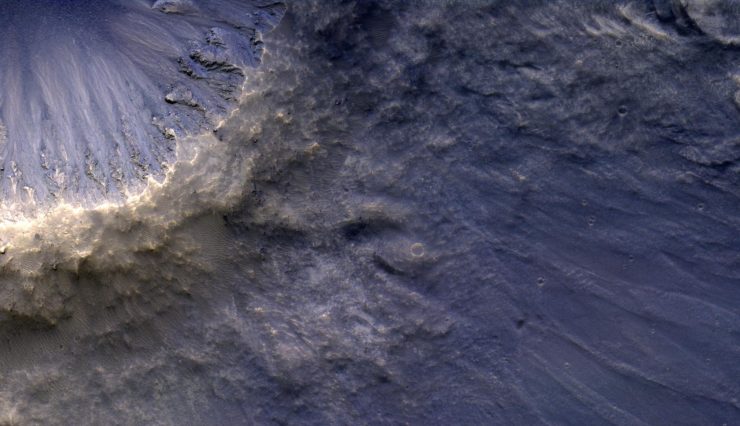
Objects frequently collide with the Earth. Most are small enough to burn up on their way to the surface, and are thus functionally irrelevant to daily life. Objects large enough to make it to the surface are uncommon, and objects large enough to do serious damage on impact even more uncommon. Earth is thought to go about half a million years between successive strikes by 1 km (big enough to trash a continent) diameter asteroids. Five kilometer (large enough for global implications) objects strike the Earth roughly once every twenty million years, plus or minus.
Good news for any particular world, because the odds are pretty good that civilization will collapse from other causes in the time between successive 1 km object impacts, with excellent odds that the species will vanish from other causes before another dinosaur-killer arrives. Unfortunately, our grand galactic polity has three hundred million independent planetary collision experiments running simultaneously. Thus, absent intervention, in any given year, about six hundred worlds will be struck by a 1 km object, and about fifteen will be struck by a massive dinosaur-killer.
Buy the Book


A History of What Comes Next
It seems reasonable to assume that any civilization able to form a galactic-scale culture also has the means to detect and divert impactors long before they impact. Well, unless the funding bodies decide that because there have been no impacts in recent memory thanks to the anti-impactor program, the program was clearly overfunded and could be cut.
Volcanism
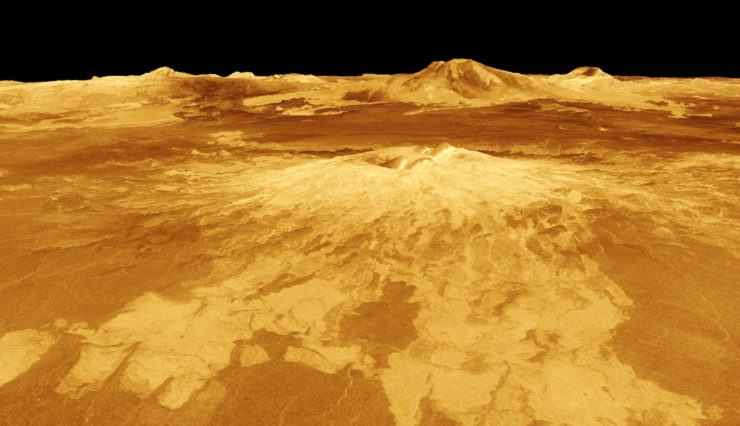
You may be surprised to hear it, but we’re used to a continual background noise of volcanic eruptions. Generally speaking, about ten volcanoes erupt on Earth every day. Like asteroids, small eruptions are more frequent than large ones. Eruptions large enough to have global implications are rare: eruptions like the one that caused the Year Without a Summer happen roughly once every ten thousand years, while something on the scale of a Yellowstone or Toba, able to significantly depopulate a continent, happen just once every hundred thousand years.
Unfortunately for our beleaguered functionaries, that means in any given year, about thirty thousand worlds will be experiencing the local AmDram production of the Year Without a Summer, ten percent of which will involve eruptions large enough to Total Party Kill whole continents. Not good news at all, but at least things could be much worse.
Flood-basalt Episodes
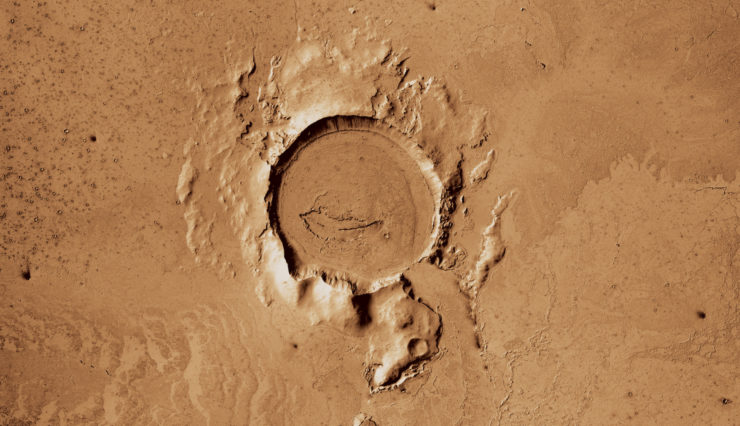
Imagine a volcano. Imagine that it is the size of a small continent. Imagine further that rather than blowing itself apart (in the manner of a Toba) or erupting for a year or two (like the Laki eruption of 1783–84 that killed a quarter of Iceland’s population), it keeps on erupting for a million years. Welcome to the exciting world of flood-basalt episodes! Flood-basalt episodes produce prodigious quantities of material—the Deccan Traps, for example, poured at least a million cubic kilometers across what is now India, while the Siberian Traps flooded its region with about four times as much material. I am sure you won’t be surprised to learn that a number of mass extinctions coincided with flood-basalt events.2
Flood-basalt events are rare—something for which I, for one, am grateful. A quick estimate says there’s one every fifteen million years or so. They compensate for their rarity by hanging around for an inconveniently long time. Given that million year-plus duration, it seems to suggest there’s about a one-in-fifteen chance at any given time there’s a flood-basalt event occurring. Which, I admit, seems like weirdly high odds. If that’s right, then about twenty million of the Galactic Government’s worlds will be experiencing a flood-basalt event. I guess the good news is “an area the size of India is permanently on fire” is the sort of thing people notice from orbit, so at least it won’t come as a surprise to whoever makes the mistake of settling there. Unless, of course, the flood-basalt event is in a quiescent phase during the survey…
Close approaches between star systems
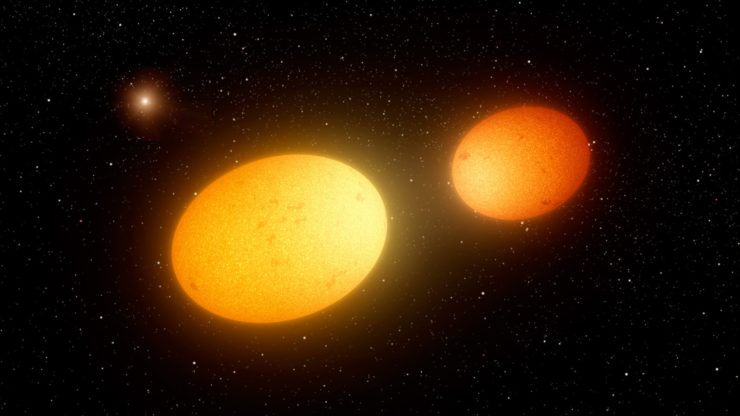
Stars—and I know this will come as a surprise to some SF authors—move. Accordingly, the distances between stars change with time. What is now the closest star system was not in the past and it won’t be in the future, either.
The good news is, the odds of another star hitting the Sun in any given year is something like 1 in 1028. Practically speaking, even three hundred million suns are extremely unlikely to suffer a single collision between them all before they become post-stellar objects.3 Near encounters, on the other hand, are a lot more frequent.
If I remember Robert A. J. Matthews’ “The Close Approach of Stars in the Solar Neighborhood” correctly, the Sun encounters other stars within 1000 AU once in 4.5 billion years. These encounters aren’t instant, of course; if the average speed differential is 20 km/s, then it takes 15,000 years to change relative positions by a light year. If we’re only interested in the period when the other star is within .1 light year, then that’s about 3,000 years total, so about two hundred inhabited worlds would be currently enjoying a close stellar encounter.
Depending on the closeness of the close encounter and the mass of the stars involved, the effects can range from disrupting the Oort cloud (sending legions of comets sunward4) to altering planetary orbits. The first is much more likely than the second. Really, this is more of a tourism opportunity—how cool would it be to look up from the surface of an Earthlike planet and see another star system passing close by?
The flip side of all this is that while it’s inevitable that a small fraction of a large number can still be inconveniently large, it is also true that it is still just a small fraction. The vast majority would not be suffering these rare disasters. They would be able to provide aid if necessary. And if they were not willing to provide for the common defence and promote the general welfare, then why even form a more perfect union in the first place?
In the words of Wikipedia editor TexasAndroid, prolific book reviewer and perennial Darwin Award nominee James Davis Nicoll is of “questionable notability.” His work has appeared in Publishers Weekly and Romantic Times as well as on his own websites, James Nicoll Reviews and Young People Read Old SFF(where he is assisted by editor Karen Lofstrom and web person Adrienne L. Travis). He is a four-time finalist for the Best Fan Writer Hugo Award and is surprisingly flammable.
[1]What about supernovas, you ask? Thankfully, giant explody murderstars really are extremely rare. The current estimate for supernovas is about two per century. With stellar densities, only few thousand stars would be close enough for their worlds to be affected. Three hundred million star systems with habitable worlds is a small enough fraction of the stars the odds one of them is close enough to be affected are only about fifty-fifty. Worlds would only be inconvenienced by supernovas about once a century, and as our current pandemic shows, once a century events can be left out of contingency plans entirely. Also, supernovas are useful sources of oh so many otherwise rare elements.
[2]Including the End Cretaceous. The dinosaurs just could not catch a break. This seems like a appropriate place to observe that about ten percent of the time elapsed since the Cambrian Explosion has been spent in mass extinction events or their aftermaths. Which means roughly thirty million of our hypothetical worlds will either being in the midst of a mass extinction or (more likely) recovering from one. Unless, of course, humans are a consistent cause of mass extinctions, in which case all of them will be experiencing one.
[3]Unless someone starts throwing suns around, which is surprisingly doable: https://www.sciencedirect.com/science/article/abs/pii/S0094576520304239
[4]Of course, space is big and orbital velocities low, so the comets would not arrive for hundreds of thousands or millions of years after they were perturbed. You really should be more concerned about encounters in the past than current encounters.




